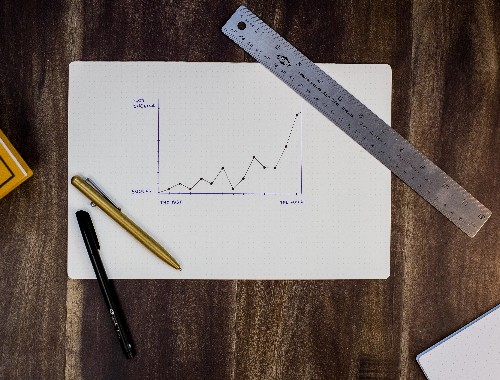Slowdown ahead, but no hard landing
The Chinese economy has been sandwiched between rising inflation and downturn risks.
Editor's note: The Chinese economy has been sandwiched between rising inflation and downturn risks. Its consumer price index (CPI) is expected to pick up further after it rose 3.1 percent in May, exceeding the government target of 3 percent for the whole year, while the external shocks caused by European debt crisis and unstable US economic recovery add to worries that the Chinese economy could slow down in the second half of this year. Economists, however, said serious inflation would not occur in China, and the economy is set to slow down in a scenario that is far from any hard landing.
Zuo Xiaolei, chief economist of China Galaxy Securities
We cannot simply regard rises in CPI as serious inflation, because each economy has its own tolerable level of inflation, which is determined also by its income growth rate. It is true that consumers have to increase expenditure when overall prices are rising. However, if the income growth rate is higher than the price rises, the growth in expenditure will be affordable to them.
CPI might increase by 3 to 4 percent this year in China. But compared to the income growth of 9.3 percent and 9.2 percent in urban and rural areas respectively in the first quarter of this year, China could afford even 6 percent CPI growth for the whole year.
China has not seen serious inflation. It usually takes two to three years for an economy in recovery to suffer any serious inflation. The problem for China, however, is that it must properly manage liquidity so that the ample liquidity would not lead to exceptional growth in inflation.
Jia Kang, director of the Institute of Fiscal Science Research under the Ministry of Finance
China's consumer price index will not be very high this year. Our target is to keep CPI within 3 percent, but whether we can achieve this will depend on external conditions in the second half of the year and the central government's macro-control measures.
It is not important whether CPI turns out to be slightly higher or lower than the target of 3 percent for the whole year. If CPI is slightly above 3 percent, it means that price increases are moderate.
In Western economies, it is acceptable if CPI is below 4 percent, which is dubbed "moderate inflation". I would rather see moderate inflation than deflation, because in China, deflation is often followed by unemployment pressure and overall political pressure. We need to think about how to extend the period of moderate inflation, which is good for China.
We should attach great importance to controlling inflation, but should also avoid taking overly stringent measures and prevent the ensuing negative impact of a over-reaction on the economy. We should make policies flexible, especially in the current uncertain situation.
Zhong Wei, economist at Beijing Normal University
The era of China's fast economic growth is coming to an end. The country's economic growth has passed its peak and will gradually slow down.
Internationally, the US economy and the dollar are trustworthy, at least for the time being. The dollar has stood out as a winner in this round of crisis. In the post-crisis era, the US recovery has been the steadiest so far.
However, China's growth peak has passed. In 2009, its year-on-year growth was about 6 percent, 8 percent, 9 percent and 10 percent for each quarter, respectively. In the first quarter of this year, it was 11.9 percent, which could be the peak.
In the second and third quarters, if macroeconomic regulation is not significantly loosened, economic growth will definitely slow down. In the future, growth momentum will gradually weaken.
Zhao Xiao, economist at the University of Science and Technology Beijing
China's economic growth will get lower quarter by quarter. Inflation will not be an issue for the country.
The next biggest problem for China is whether the country will face slower growth and how it can find new growth engines in the medium term.
Given the current situation, it is very possible that growth will slow in the medium term. China's economic growth fell to around 6 percent for three quarters during the Asian financial crisis. The return to high growth last year did not mean China's economy had entered a period of stable growth. A double-dip slowdown is possible, but a more important issue is how to maintain long-term growth as exports, real estate and the "population dividend" play a less important role in the coming five to 10 years.
Globalization and rising external demand have been crucial to China's success over the past three decades. But it is unlikely that China can maintain this export-driven growth as neither Europe nor the US can afford any longer to import as much as before.
China's property sector still has a promising outlook. The government used to crack down on the property industry when social problems occurred, before shifting to stimulate the industry when the overall economy encountered trouble. I don't think these pendulum-style policy swings will continue in the government's new round of economic regulation.
Zhang Jianhua, director of the research bureau of the People's Bank of China
Inflation will not be a major problem for China this year, with year-on-year growth of around 9 percent, if we make a conservative estimate.
But inflationary expectations still exist and the inflation rate currently exceeds the benchmark one-year deposit rate.
Negative real interest rates will not affect the economy in the short term, but, in the long term, will trigger resource misallocation. Therefore, we should carefully monitor the movement of inflation especially after massive amounts of liquidity were injected into the market last year. The effect of liquidity will surface sooner or later and we must deal with it.
Chinese economic growth will moderately slow down in the second half of this year, but there is no need to worry about a "double-dip" slowdown. Many economists agree that gross domestic product (GDP) growth in the first six months could reach 11 percent.
If this is the case, China could easily maintain 9.5 percent annual growth, if it can secure 8 percent growth in the second half of the year.
Even though the global economic crisis is yet to end, China's exports have been growing at a relatively fast pace, rising at an annualized 20 percent in the first five months. Property investments in major cities and second- and third-tier cities will continue to support China's overall investment. With China's per capita GDP exceeding $3,000, the time is ripe for the country to take steps to spur consumption.
Moreover, as China implements its pledge to cut emissions, this will also bring huge investment opportunities, which will contribute to economic growth.
-

Quanyou teamed up with the fashion brand ANNAKIKI to launch a new joint product!
-

Outer, an outdoor furniture brand founded by Chinese, enters the Australian market
-

National Bureau of Statistics: The retail sales of furniture in the first three quarters reached 120.5 billion, an increase of 20.7%
-

Enveloping lounge chairs and lightweight office chairs from Arper feature

 沪公网安备31010402003309号
沪公网安备31010402003309号



